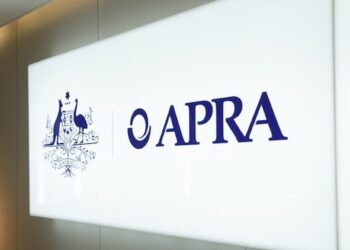Treasurer Jim Chalmers will deliver his federal budget address to the House of Representatives this evening (9 May), with superannuation reform expected to form a key part of the government’s fiscal strategy for the 2023–24 financial year.
Underpinning the reforms was a push to legislate a definition of super, which the government has claimed would protect the system and safeguard retirement savings.
“Despite its central role in the retirement income system, there is no agreed objective of superannuation, legislated or elsewhere, to serve as a guide for policymakers, government, regulators, industry, and the wider community,” Treasurer Chalmers said in February.
“We need to change that.
“Legislating an objective for super [will] give confidence to the super industry and peace of mind to Australian workers that we’ll do everything we can to safeguard their savings to deliver income in retirement.”
Treasury launched a consultation process for industry feedback, which closed on 31 March.
Cutting tax concessions
The Albanese government also announced plans to double the concessional tax rate for super balances exceeding $3 million, from 15 per cent to 30 per cent.
The proposed changes, which would take effect on 1 July 2025, would not be retrospective, applying only to future earnings.
The higher concessional tax rate was tipped to contribute $900 million to the bottom line over the forward estimates and approximately $2 billion in the first full year of revenue after the election.
This assumed the reforms would impact 0.5 per cent of super accounts or roughly 80,000 Australians.
However, according to the Financial Services Council (FSC), as it stands, the proposed changes would have a far greater impact on taxpayers than initially intended.
The FSC’s analysis of data from the Australian Taxation Office (ATO) found approximately 500,000 super balances could be hit with a 30 per cent concessional tax rate — six times higher than the government’s estimates of 80,000.
Independent trustees also criticised the proposal, with the SMSF Association (SMSFA) criticising the tax calculation model, which proposes to use movements in a total super balance (TSB) to assess taxable income.
In its pre-budget submission, the association described the model as “unjust”, claiming it would not generate a “true, fair, or equitable” reflection of a member’s tax obligations.
The SMSFA also feared the proposed model could tax members twice, with the current calculation including tax refunds invested in the fund.
In light of these concerns, the association recommended the formal consultation process be undertaken ahead of the publication of exposure draft legislation for the proposed reforms.
Introducing payday super
The federal government has also proposed a reform requiring employers to pay super on the same day as salaries or wages from 1 July 2026.
Treasurer Chalmers claimed the move would boost retirement balances and simplify payroll management.
“The change will particularly benefit those in lower paid, casual and insecure work who are more likely to miss out when super is paid less frequently,” he said earlier this month.
To enforce the reform, the ATO would be empowered to detect unpaid super payments earlier.
The government, along with Treasury, was expected to engage with industry before tabling legislation.
Budget overview
The budget would be released against the backdrop of elevated inflation, mounting cost of living pressures, and global market volatility.
The government has said its budget would aim to strike a balance — easing the cost-of-living burden for vulnerable Australians without exacerbating inflationary pressures.
According to HSBC chief economist Paul Bloxham, the budget would be “cautious in its spending initiatives” and would involve a “rise in net taxes” in a bid to subdue aggregate demand in the economy and “ease the high-inflation challenge”.
“Despite the budget bottom line that is likely to be much better than had been expected six months ago, we expect the government to save much of the revenue windfall,” he added.
A key component of the government’s limited spending was expected to be a $14.6 billion cost-of-living relief package, which includes an increase to the age cut-off for the Parenting Payment (Single) from eight to 14 from 20 September 2023.
Targeting multinationals
Meanwhile, HLB Mann Judd’s tax consulting partner, Jolyon Dare, said the government would take aim at multinational corporations operating in Australia by empowering the Australian Taxation Office (ATO) to investigate potential breaches of transfer pricing and thin capitalisation rules.
“I would expect there to be a continued focus on this as part of Tuesday’s budget announcement, including deferrals on some of the measures previously announced as taxpayers haven’t had time to absorb the impact of the changes,” he said.
But this, he claimed, would hurt Australia’s competitiveness in global markets.
“Multinationals operating here are already subject to a higher penalty regime and scrutiny,” he said.
“The ‘significant global entity’ concept is out of step with other countries — the local operation could be a very small part of a big global entity but still be subjected to enormous tax risks just by being here.
“Depending on Australian revenue, the tax rate for multinationals is 25 or 30 per cent, which is high by global standards.”
However, when asked how the community would receive the budget, Treasurer Chalmers claimed the government’s budget would be well balanced.
“I hope they recognise the effort that we’ve put in to try and look after people doing it tough,” he said.
“But also, there’s a lot in the budget about laying the foundations for future growth in our economy because we need to help people through a difficult period now. But we also need to invest in the future.
“So, the budget will be about seeing people through a difficult period, but also setting Australia up for success into the future.”




